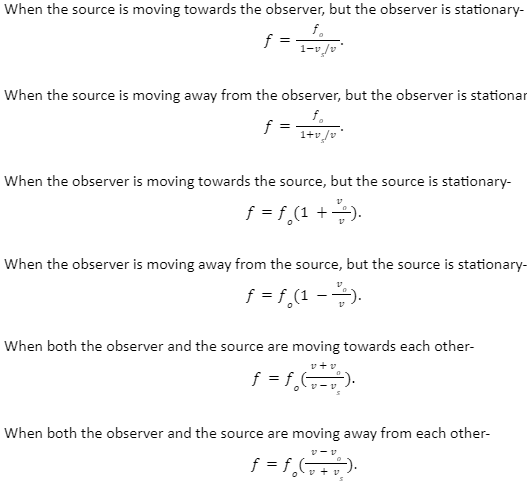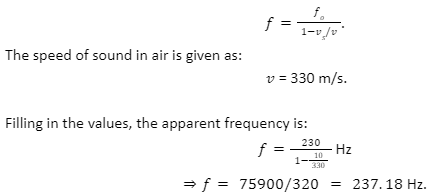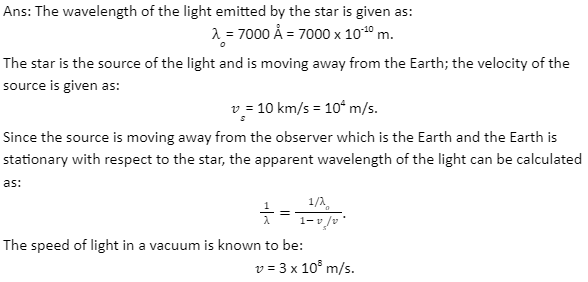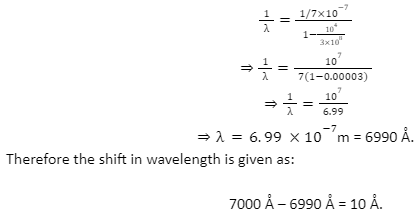The Doppler effect is a fascinating phenomenon observed in the propagation of waves. It deals with the apparent distortion that happens in the propagation of waves when the source or the observer of the wave are in relative motion.
According to the Doppler effect, the frequency of a wave undergoes an apparent change when it leaves the source and is received by an observer as there exists nonzero relative motion between the source of the wave and the observer.
The basic mechanism of the Doppler effect implies that the pitch or the frequency of the wave changes as the distance between the observer and the source changes. When the distance separating the observer and the source increases, the pitch or the frequency decreases. Whereas, when the distance separating the observer and the source decreases, the pitch or the frequency increases.
Formula for Doppler effect
The Doppler effect is primarily observed in two types of waves, sound waves and light waves. In the case of sound waves it involves the change in the pitch with which the sound is heard. But in the case of light, the frequency changes; therefore the wavelength of the light changes. This means that the colour of the light also changes.
The different formulas for the Doppler effect for all possible cases may be stated as follows:

In all these formulas:
f = apparent frequency
fo= original frequency of the wave
v = velocity of the wave in the medium
vo= velocity of the observer
vs = velocity of the source
Doppler effect problems solved
Let us solve a few problems related to the Doppler effect to understand the formulas and their implications.
Q. An observer is standing at a train station. A train is arriving at the station with a velocity of 10 m/s. The train has a horn that emits a sound of frequency 230 Hz. Considering that the observer is stationary, what will be the apparent frequency of the sound to the observer?
Ans: The observer is stationary; therefore we can say that vo is equal to 0 m/s. Since the train is the source of the sound, the velocity of the source vs is equal to 10 m/s.
The original frequency of the sound produced by the train is given to be 230 Hz.
Therefore,

Now, since the observer is stationary and the source is moving towards the observer because the train is arriving at the station, the apparent frequency can be calculated as:

The frequency of the sound increases since the source is moving towards the observer.
Q. A star in a distant system produces light of wavelength 7000 Å. The star is moving away from the Earth with a velocity of 10 km/s. What is the shift observed in the light’s wavelength emitted by the star?
Ans: The wavelength of the light emitted by the star is given as:

Since the source is moving away from the observer which is the Earth and the Earth is stationary with respect to the star, the apparent wavelength of the light can be calculated as:

Importance of the Doppler effects’ problem solved
Understanding how to solve the problems of the Doppler effect is crucial to understanding various phenomena that are observed in nature. The light captured by huge telescopes from space displays the Doppler effect, and to understand its source, one must be able to eliminate the apparent shift due to the Doppler effect. Similarly, sound waves that are received at long distances by sources in motion are also distorted. To analyse that, the shift due to the Doppler effect has to be considered.
Conclusion
The Doppler effect is an interesting phenomenon observed in the propagation of waves. It deals with the apparent distortion that happens in the propagation of waves when the source or the observer of the wave are in relative motion.
The Doppler effect is primarily observed in two types of waves, sound waves and light waves. In the case of sound waves, it involves the change in the pitch with which the sound is heard. But in the case of light, the frequency changes; therefore, the wavelength of the light changes. This means that the colour of the light also changes.
Understanding how to solve the problems of the Doppler effect is crucial to understanding various phenomena that are observed in nature.
 Profile
Profile Settings
Settings Refer your friends
Refer your friends Sign out
Sign out






